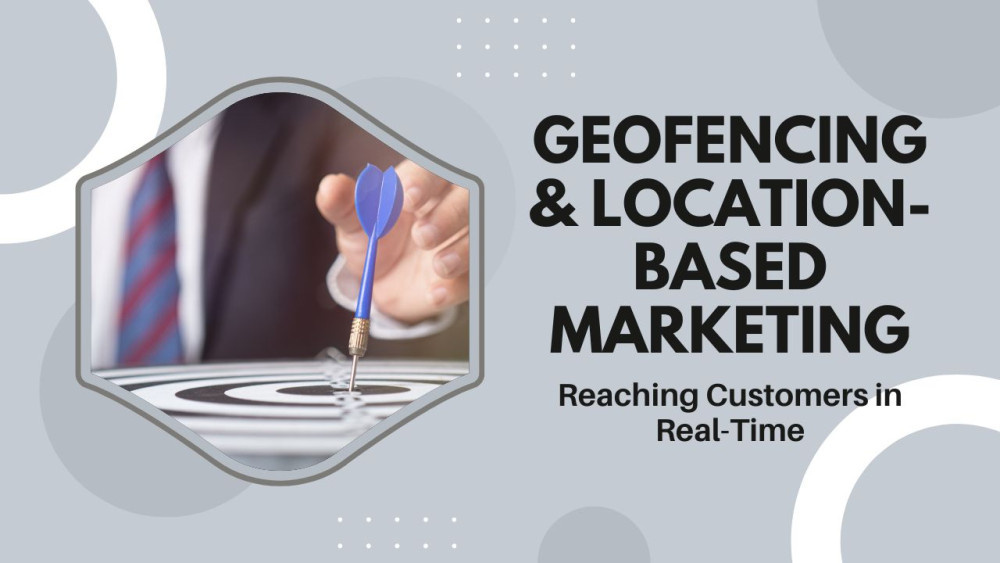In an era where digital marketing is all about precision, geofencing and location-based marketing have emerged as game-changers. Businesses no longer need to rely on broad targeting methods; instead, they can engage potential customers based on their real-time location. Whether it’s a retail store, a restaurant, or an event venue, brands can now deliver hyper-relevant messages to their audience at the right place and time.
Understanding Geofencing & Location-Based Marketing
Geofencing is a location-based marketing technique that uses GPS, Wi-Fi, RFID, or cellular data to create a virtual boundary around a specific geographic area. When a mobile user enters or exits this predefined area, it triggers automated messages such as promotions, reminders, or personalized offers.
Location-based marketing, on the other hand, is a broader concept that leverages real-time geographic data to deliver tailored advertisements or experiences. This strategy can include geofencing, beacon technology, geotargeting, and geoconquesting to enhance consumer engagement.
Why Geofencing is a Game-Changer for Marketers
1. Real-Time Customer Engagement
Traditional advertising methods rely on timing guesses, but geofencing ensures that messages reach potential customers exactly when they are near a business location. Imagine a coffee shop sending an exclusive discount to people passing by during the morning rush—it increases the chances of conversion instantly.
2. Hyper-Personalized Marketing
With access to real-time location data, businesses can create highly relevant and customized offers. A retail store, for instance, can notify shoppers about in-store discounts when they step into a shopping mall, enhancing the likelihood of immediate action.
3. Better ROI and Ad Efficiency
Since geofencing ensures that ads are only shown to people within a defined area, it minimizes wasted ad spend. This hyper-targeting strategy means businesses reach consumers who are most likely to convert, leading to a better return on investment.
4. Competitive Edge with Geoconquesting
Geoconquesting is a tactic that allows businesses to target customers near a competitor's location. For example, a fast-food chain can send a limited-time discount offer to users who are near a rival restaurant, tempting them to switch.
5. Seamless Omnichannel Integration
Geofencing can complement other marketing channels like social media, email campaigns, and push notifications. Brands can use location data to refine their broader marketing strategy, ensuring a seamless experience across multiple touchpoints.
Industries Benefiting from Geofencing & Location-Based Marketing
Retail & E-Commerce
Brick-and-mortar stores use geofencing to attract foot traffic by offering location-based discounts, while e-commerce brands leverage real-time data to personalize online promotions.
Hospitality & Restaurants
Restaurants and hotels can send special promotions or menu updates to nearby visitors, encouraging them to visit.
Event Marketing
Concerts, sports events, and conferences can use geofencing to enhance attendee experiences with real-time updates, exclusive content, and promotional offers.
Healthcare
Hospitals and clinics can remind patients of check-ups or inform them of nearby medical facilities in case of emergencies.
Best Practices for Implementing Geofencing
Define Clear Boundaries: Ensure that the geofence is appropriately sized to maximize engagement without being intrusive.
Provide Value: Users are more likely to interact with location-based messages when they receive something beneficial, such as a discount or special offer.
Ensure Privacy Compliance: Always seek user consent and adhere to data privacy regulations to build trust.
Measure and Optimize: Track the effectiveness of geofencing campaigns to refine messaging and improve results over time.
Conclusion
Geofencing and location-based marketing represent the future of precision-driven digital advertising. By targeting potential customers based on real-time location, businesses can maximize engagement, increase conversions, and enhance overall customer experience. As technology continues to evolve, brands that adopt geofencing will have a significant edge in creating personalized and impactful marketing campaigns.
Whether you’re a retailer, restaurant, or event organizer, leveraging location-based marketing could be the key to unlocking new opportunities and driving customer engagement like never before.


